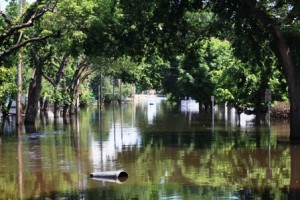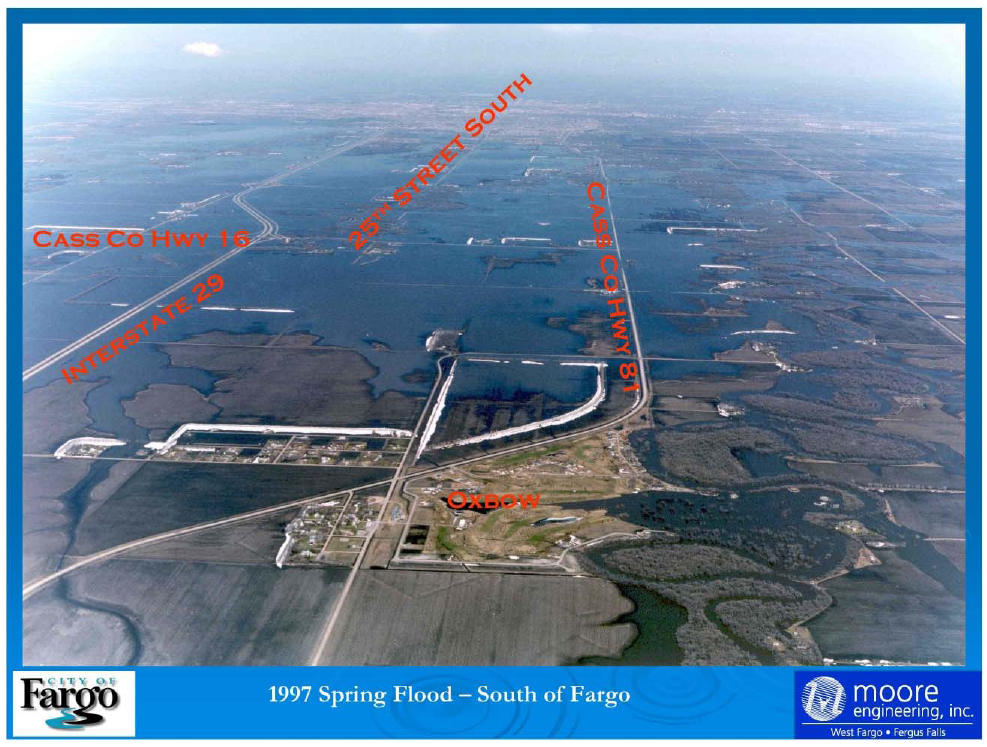They Dropped Their Flood Insurance, Then the ‘Mouse’ Roared
By A. G. SULZBERGER
Published: June 23, 2011
New York Times
MINOT, N.D. — Moving from their hillside condominium to a just-built house near the meandering waters of the Souris River, the Rasmussens, like so many of their neighbors, never even contemplated buying federal flood insurance.
After all, the once flood-prone river — known locally as the Mouse, after its French name — had seemingly been tamed by public works projects that reshaped the channel, raised the banks and controlled the flow of water.
When the federal government lifted a requirement a decade ago that low-lying valley homes have flood insurance, most residents stopped buying it.
“I didn’t have any concerns,” Dawn Rasmussen, a local real estate agent, said Thursday as she surveyed the flooded city landscape with her husband, Gary, a firefighter, a day after they fled their home. “It was not going to happen to me. I was in complete denial.”
An unprecedented — and still escalating — flood this week quickly overwhelmed those manmade defenses along the Souris, forcing a series of evacuations that displaced more than a quarter of the city’s population.
Already spreading across the heart of downtown and threatening to split the city completely in two, the river was expected to rise far higher and arrive far sooner than initially forecast.
The revised predictions, which showed the river topping the 130-year-old record level by more than eight feet, sent panic through a city that had believed itself prepared to handle the deluge. There were concerns that the water could destroy secondary defenses the city had built to safeguard critical parts of the infrastructure, like water and sewer facilities and the lone remaining bridge.
But another problem facing residents of Minot is a consequence not of failing to control the river but of decades of doing so successfully: just one in 10 homes in the flood zone still have flood insurance.
“Some citizens have been lulled into a false sense of security because we have had such good results,” said Dean Frantsvog, the City Council president.
Michael Bart, chief of engineering and construction for the St. Paul District of the United States Army Corps of Engineers, said nobody could have anticipated a flood of this magnitude, with water levels almost six times what the system was designed to take.
“The system was working,” he said. “This is a Noah flood. As in big, large, historic.”
Gov. Jack Dalrymple said, “It will change the way people manage water in this river valley from now on.”
The last time a major flood hit this city, North Dakota’s fourth largest, was in 1969, and the widespread damage prompted the construction of new flood protection systems along the Souris, which sends its waters in a brief loop through North Dakota before returning to Canada. The river channel was made wider, deeper and straighter. The banks were raised. And a series of new dams along the river in both Canada and the United States allowed for more control of water flow.
In 2000, federal officials revised the boundaries of flood maps to show a river that — even in the unlikely event of a 100-year flood — was expected to largely remain inside its banks.
The change, a statement of lowered though not eliminated risk, meant that the surrounding residential areas were no longer required to buy federal flood insurance, although those who chose to continue with coverage would be eligible for reduced rates.
Federal emergency management officials urged valley residents to continue to buy coverage — even visiting a few months ago to warn that the reservoir levels were perilously high. But the number of people with insurance continued to drop. A year ago, 959 residents had flood insurance. This year it was 476, according to the Federal Emergency Management Agency. (Standard homeowners’ policies do not cover flooding.)
“People historically, if they live outside of it and have a choice to buy it, they won’t,” Barbara Fitzpatrick, a senior flood plain specialist with FEMA, said of flood insurance.
Some residents said they had misinterpreted these revised flood estimates to mean that they were no longer at risk. Others said they had just used the lower odds as an opportunity to save some money.
In the tradition of a state where tough weather and self-sufficiency are a source of pride, few blamed the government for their decisions.
“There’s nothing you can do about the water,” said Robert Parizek, who recently remodeled his trailer home on the banks of the river and is now living in a tent.
As rumors and imaginations continued to run at full force in advance of the biggest waters, many residents were already worrying about how they would cover the cost of paying for repairs — or potentially a new home — without insurance money to help.
“The Lord will take care of it,” mused William Huth, who dropped insurance a few years back and was hoping to retire from his job at the Air Force base in town.
Gary Rasmussen, who is now living in a trailer home soon to be underwater, had no pity for himself and did not try to justify his decision not to buy insurance.
“That’s our fault,” he said. “When you live by the river you never know. I don’t blame the government. We could have gotten it if we wanted it.”
Cited Source: New York Times
Author: A. G. SULZBERGER
Views: 121

